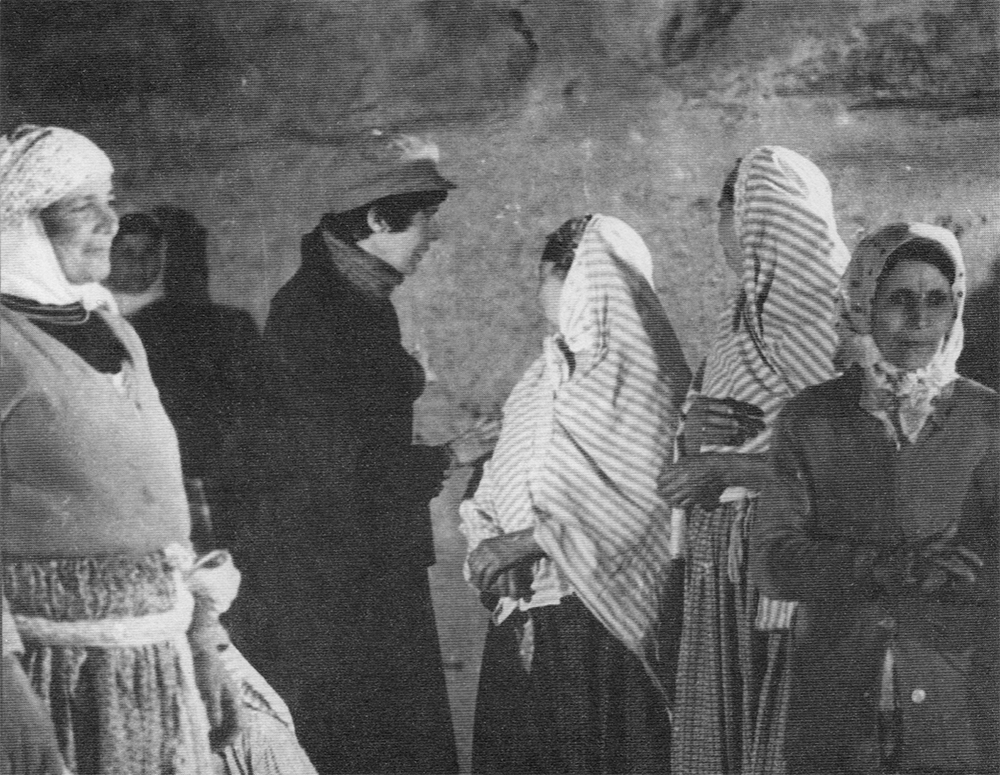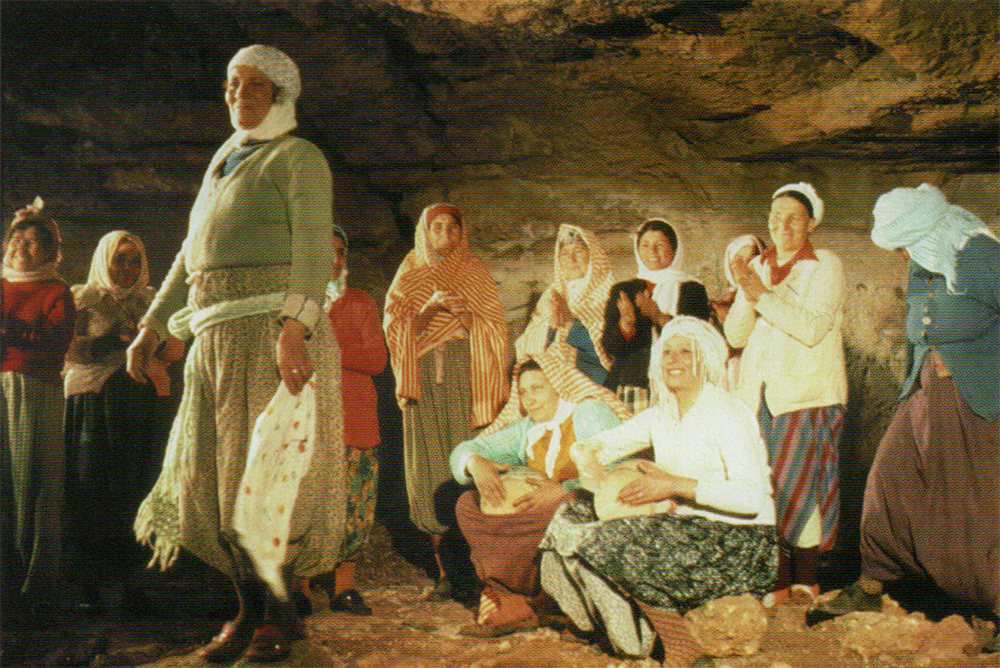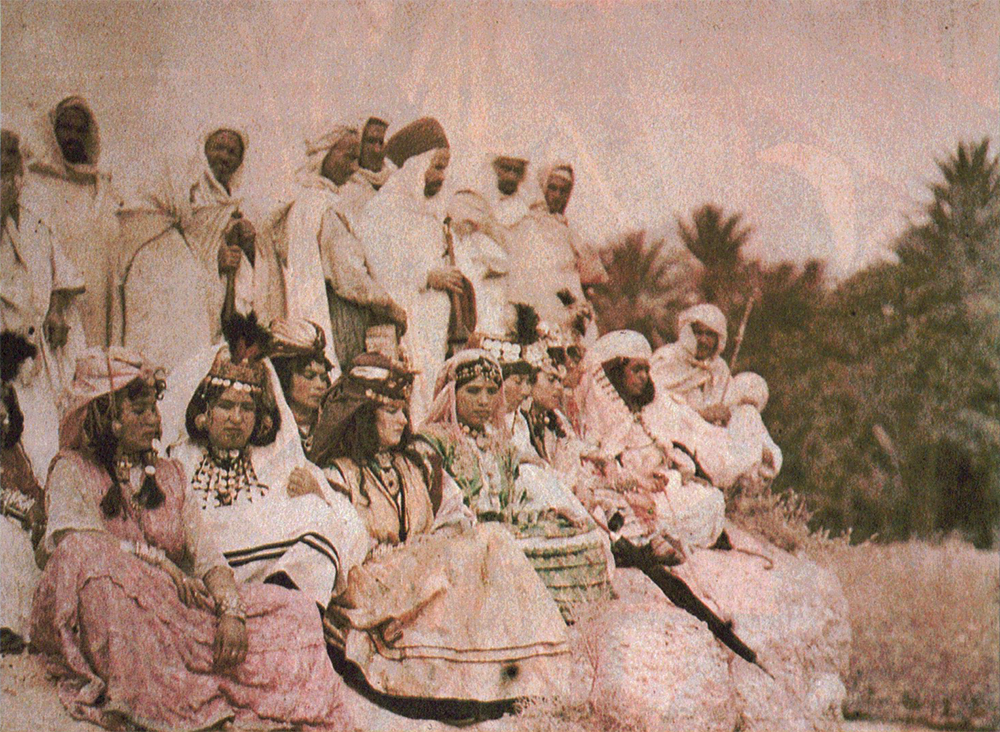My Need for Cinema

1. Why do I need a writing of cinema?
For me, cinema is neither a “job” – in the sense of a career – nor a “vocation” – in the sense of a calling. What is it, then, for me, having made my first film shortly after the age of forty (1976-1977), then a second one (1982) shortly after the age of forty-five?
Ten years or more later – during which, admittedly, no less than six scenarios that I tried to direct in a French-Algerian co-production followed one another, two of which resulted in texts “returned” to literature, but all of them “blocked” in one way or another by the Algerian state cinema; hence, ten years later, what does cinema as work mean to me: a plan, reflection and an attempt at realization...?
I will question myself before you. Today, as luck would have it, I have been at the side of Sembène Ousmane, the pioneer of African cinema. And, now, I’m faced with a proximity that inevitably makes me modest. And yet, this is what allows me to situate myself – I was going to say “off-screen” – let us simply say elsewhere.
“Elsewhere”, as a writer who came to the sound-image rather late. Elsewhere, as a woman with an Arab-Islamic cultural heritage in which the prohibition of images crystallizes, more than ever, on the female body.
Elsewhere, finally, as an Algerian, at a time when my country, after the thirty years of independence I’ve spent with it, is exploding, is in danger of breaking up, covers itself in blood and searches in blood and blind distress for a future or a non-future, I don’t know, in short, in this tunnel in which my community today is trudging along, how to see, what to see and what to show?
Why am I still driven by a desire for cinema after having been confronted with the Algerian film industry these last years, which readily helped films by filmmakers from the third world (Egyptian, Lebanese, Senegalese, or even Westerners), but marginalized me locally because I was a woman and I persisted, moreover, in practicing a cinema of research and not of consumption...?
I, therefore, who situate myself “off-screen” in relation to the Algerian cinema of independence, I am going to try to talk to you about my need for cinema, which remains in spite of all these obstacles.
2. Algeria, since about 1986, that is to say, after all, for less than a decade, finds itself, because of television satellite dishes, under the daily spray of a stream of images conceived elsewhere, more often than not in a language or languages from elsewhere, with the insistent exhibition of consumer objects sold and consumed elsewhere (chocolates, cheeses, deodorants, washing powder, cars, etc.), and with a parade of human bodies, dressed or naked, or half-naked, referring to a pseudo-sensuality that is filmed flatly and indefinitely excites a voyeurism of frustration...
Algeria is certainly only experiencing the situation lived by many third-world countries (Latin America, the Caribbean, certain Asian countries...) in which the higher the poverty, dependence and blatant social inequality, the more the dominant Western imagery is proposed as a soporific antidote, as an anaesthetic and supposed visual way of letting off steam.
At the same time, the international “news” (CNN and other media channels) is hiding or distorting earth’s real tensions, all the while pretending to show them to us, in their ephemeral nature.
I do not pretend to make a political or ideological statement here in order to outline the specular state of my natural audience, which is more than ever subjected to this audiovisual domination; it is simply an aesthetic judgment on my part.
It is certainly banal, when you live in New York, Paris or Vancouver, to denounce the subculture of the majority of this television production. The fact remains that any authentic filmmaker, any photographer, any painter or sculptor can now only work with his back turned, his eyes closed to these millions of windows, fireflies of illusion and even more of mediocrity, of nothingness.
But when, for the third-world public, some people search for a fragile truth of their own via sound-images, and evoke, as I have done, the massive consumption of the non-consumable (concretely speaking), whether they like it or not, from the very outset, they can only settle in the fracture of the gaze, in the gap of absence, on the infinite ridge of frustration: in short, in violence.
And all the more so for Algerian culture, whose elite – under threat once again today – had to heal the wounds of more than a century of colonial rape and of a distressing war of decolonization.
To heal the wounds and rethink its history, its memory, its inner duration above all, and this through languages scrabbling to become plural.
(It should be remembered that for thirty years, Algerian cinema, the only cultural expression financed by the authorities for the benefit of the few, with almost Hollywoodian pretensions, wanted to be “pompous” – according to a “pompes funèbres aesthetic” —Saint Sulpician even, with a swollen pseudo-lyricism and a demagogic kind of populism. An official cinema that prevailed without a real audience, to which golden palms were given in Cannes – while, in the worst of circumstances, three or four directors, authentic filmmakers, only managed to make one, at most two, auteur films...)
Under these circumstances, the television image was not just a pervasive subculture of sustained sleep and absence; it operated as an instrument of accelerated dispossession and acculturation.
I even think that, in Algeria’s case, the televised sound-image – as well as certain films shot with the millions provided by the state for the “great” pseudo-historical “spectacle” – this image has deliberately functioned as a weapon of identity destruction.
3. As this gathering here in Victoria is called “Ecrits/Ecrans” [“Writings/Screens”], I will summarize where I am standing at the end of 1994.
For two years, I have been grappling with the impossibility of expressing blood, death, hatred – of expressing, that is to say, of putting it down in literary writing. (It is not a coincidence that my last novel, Vaste est la prison, begins with a prologue called “The silence of writing” and ends with “The blood of writing”.)
In short, the genre of the novel has served me to evoke the initial stages of the current crisis: that is to say, in my eyes, the conquest of a female space on Algerian soil – and as soon as this space starts to become visible, starts to allow for a beginning of jubilation for some of us, the erasure, or the risk of dissolution appears and invades everything!
My relationship to today’s reality is also marked by the attempt to rely on the sound-image, within the framework of the film shot, to create it as a moving scene, like a concentrated story.
Yes, to turn to “audiovisual creation” (is that really the formula we need to use?) in order to confront myself, to measure myself and thus “produce”, that is to say “invent” (and one only invents, as Jacques Derrida recently said in Lisbon, the impossible) – to invent, yes, the encounter with what, if not with raw violence, with screaming and delirious evil, with murder and the omnipresent stride of death, over there, at home.
I would say the following, which seems enormous to me, which seems outright impossible to me, which would make me go into a trance, I would say that, yes: the idea of Algeria’s possible death, as an act of defiance, of stubborn hope, of writing – of either cinema or literature – must make life present. Pain too perhaps. But above all life. The incurable melancholy, but above all life!
Faced with the bloody traces and threats, faced with the hideous scarlet of the Algerian everyday, to restore, above all, the palette of white, grey, shades of brown, green-grey, ash-blue, the entire band of a pre-dawn sky...
You realize: how to protect yourself against the flood of images flung at the eyes of the “civilized” world of a convulsionary reality (in Rwanda, Somalia, Bosnia, in so many other tragedy-riddled places!)? In sound-images, we need to reconnect with a cinema not of experimentation, but of experience – as if we had to cross, with eyes wide open and sharpened ears, Saharas of solitude for a clean screen.

4. Of course, buried under the dirt and vulgarity of conventional images floating before my audience – that we want to confuse, or destabilize in order to make it fit into the rank of conformism and hopeless servitude – a cinema of coloured silence and primary noises would be neither avant nor arrière-garde, but a cinema of survival, because of its own original rhythm.
An “Algerian” cinema of a living Algeria, alive and multiplied, would go back to capturing life’s pulsations (animal sighs, the palpitations of leaves, the wind blowing and the roar of the river, so as to finally accompany the voice and body of an Algeria that is nearly forbidden, or in any case underground and, until now, rarely seen, barely perceived...).
You notice that I am dreaming. Is it this dream cinema that I wanted to talk to you about? No... It’s a sketch for a cinema of lightness, of traces and rebirths. Of searching, most certainly...
In this immanence, which risks being formless, where would the reflection (or the position) of History be, through the unfolding of a simple story? A cinema of fiction would be practiced not to arouse emotions, but rather to re-install true duration – whereas television as a pastime coagulates time, empties and seals it.
5. Don’t worry: if productional chance were to allow me a return to filmmaking – fiction films, for a cinema audience – I would certainly unfold a story, a series of apparent anecdotes. In short, a continuity.
But which current landscapes of desolation and destruction would resurface in one way or another, probably in the background? How to position myself from that point on, how to frame things, what to evoke in a roundabout way, I would say, by slowly coming nearer, and by taking a step back in case of excess (Here, I call “excess” the failure of over-naming something or someone. Because the face of hatred, when filmed too superficially, no longer means anything, becomes a commonplace, while we need to allow which mystery or horror to take shape exactly?).
This suddenly reminds me of Robert Bresson’s superb last film, L’argent. While the apparent central subject is the story of a crime, in one shot towards the end, the camera has a double approach, both towards and away from the fatal act. That’s all: hardly anything is visible, yet all of the tragic horror is communicated.
Thus, in “cinematography” worthy of the name, there is a need to show and to hide, to deplore and not to cry, but to harden so that the lost tenderness nidifies. In short, cinema needs to receive and refuse violence through a gaze that hurts itself and through the voice that rises up.
That is the ambiguity: a few hesitant steps are sketched out in the face of encroaching death, yet the desire persists. Not to immediately bear witness, but rather in a hope to liberate the desire for murder without murder, and also the desire for victimization without the victim, who is thus spared.
Ambiguity and, above all, aporia: why, in the face of encroaching death, does the sound-image, by trying to find itself and by impregnating itself, both keep watch, watch out and watch the nighttime violence?
The neutral sound-image, turned blank, or left blank, would defuse itself right before, or right after, alas. Too late, never too soon, alas once more! Whom to show, what to put into play, what to play and relive, faced with the lifeless and voracious eye of death? A dead eye.
6. My need for a writing of cinema? Certainly, but with eyes wide open, ears driven far into time, gradually rediscovering, at the end of silence, the confusion and the pure, or virgin, or dirty white, rediscovering the duration of life...
Did I speak above of a dying Algeria, of its body almost ready to be transported to the nearby morgue for an autopsy after the crime?
No. I spoke of each of us being in need of sound-images, of a cinema for the revival, the rebirth, and the quivering of a tattooed Algeria. That is what my need for cinema feeds on today: a desire that is perhaps formless, a prolific desire I am afraid, and I apologize for it here before you.

This text was originally published as ‘Mon besoin de cinéma’ in “Ecrit/Ecran : Assia Djebar-Sembène Ousmane,” [Colloquium] University of Victoria, Vancouver (October 1994).
Image (1) Shooting of The Nouba of the Women of Mount Chenoua (Assia Djebar, 1977)
Image (2) from The Nouba of the Women of Mount Chenoua (Assia Djebar, 1977); The women in the cave of Tipasa
Image (3) from The Zerda or the Songs of Oblivion (Assia Djebar, 1978-1982); Young girls from Tlemcen. Groups from Biskra. First autochromes, 1922

